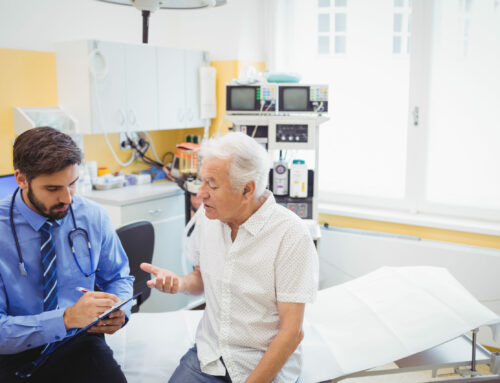Lymphedema: Symptoms, Causes, Treatment
What are the symptoms of lymphedema?
Lymphedema is a condition characterized by swelling in one or more limbs, typically a leg or an arm. The swelling is caused by a blockage in the lymphatic system, which is part of the immune system and helps remove waste and toxins from the body. The symptoms of lymphedema can vary depending on the severity of the condition, but common symptoms include:
- Swelling: The primary symptom of lymphedema is swelling in the affected limb. The swelling may range from mild to severe and may be accompanied by a feeling of heaviness or tightness in the limb.
- Pitting edema: In some cases, the swelling may cause the skin to retain an indentation after being pressed (pitting). This is known as pitting edema.
- Aching or discomfort: Some people with lymphedema may experience aching or discomfort in the affected limb.
- Decreased flexibility: The swelling and buildup of fluid can lead to decreased flexibility in the affected limb.
- Recurring infections: People with lymphedema are at an increased risk of developing infections in the affected limb, such as cellulitis.
- Hardening of the skin: In advanced cases of lymphedema, the skin in the affected limb may become thickened and hardened.
It’s important to note that lymphedema can develop gradually over time, so it’s possible to have the condition without noticing any symptoms at first. If you experience persistent swelling, especially in one limb, or any other symptoms of lymphedema, it’s important to see a healthcare provider for an evaluation. Early diagnosis and treatment can help manage symptoms and prevent complications.
What are the causes of lymphedema?
Lymphedema is caused by a blockage in the lymphatic system, which is responsible for draining lymph fluid from tissues throughout the body and helping to maintain the body’s immune system. The blockage prevents the lymph fluid from draining properly, leading to swelling in the affected area. There are two main types of lymphedema:
- Primary lymphedema: Primary lymphedema is a rare, inherited condition that occurs when the lymphatic system is underdeveloped or malformed. It can be present at birth or develop later in life.
- Secondary lymphedema: Secondary lymphedema is more common and occurs as a result of damage to the lymphatic system. This damage can be caused by surgery, radiation therapy, infection, trauma, or other medical conditions. Common causes of secondary lymphedema include:
- Cancer treatment: Surgery to remove lymph nodes or radiation therapy can damage the lymphatic system and lead to lymphedema. This is most common in people with breast cancer, gynecologic cancers, or prostate cancer.
- Infections: Infections such as cellulitis can cause inflammation and scarring of the lymphatic vessels, leading to lymphedema.
- Injury: Trauma or injury that damages the lymphatic vessels can result in lymphedema.
- Obesity: Excess weight can put pressure on the lymphatic system, leading to lymphedema in some cases.
- Chronic venous insufficiency: This condition, which causes poor circulation in the veins, can lead to lymphedema.
- Filariasis: A parasitic infection that is a common cause of lymphedema in tropical and subtropical regions.
It’s important to note that while lymphedema cannot be cured, it can be managed with proper care and treatment. If you are at risk for lymphedema or have symptoms of the condition, it’s important to see a healthcare provider for an evaluation and to discuss treatment options.
What is the treatment for lymphedema?
The treatment for lymphedema aims to reduce swelling, manage symptoms, and improve the function of the affected limb. Treatment typically involves a combination of therapies, including:
- Compression therapy: Compression garments, such as compression sleeves or stockings, are worn on the affected limb to help reduce swelling and improve lymphatic drainage. These garments apply gentle pressure to the limb, preventing the buildup of fluid.
- Manual lymphatic drainage (MLD): MLD is a type of gentle massage that helps move lymph fluid from the affected limb to other parts of the body where the lymphatic system is functioning normally. MLD is typically performed by a trained therapist and can help reduce swelling and improve lymphatic flow.
- Exercise: Regular exercise, especially activities that involve the affected limb, can help improve lymphatic flow and reduce swelling. A physical therapist can recommend appropriate exercises for people with lymphedema.
- Skin care: People with lymphedema are at an increased risk of developing infections in the affected limb, so it’s important to keep the skin clean and moisturized. Avoiding cuts, scrapes, and other injuries can also help prevent infections.
- Compression bandaging: In some cases, short-term compression bandaging may be used to reduce swelling and shape the limb before transitioning to compression garments.
- Lymphatic drainage pumps: These devices use pneumatic compression to help move lymph fluid from the affected limb. They are often used in conjunction with other treatments for lymphedema.
- Surgery: In severe cases of lymphedema that do not respond to other treatments, surgery may be considered. Surgical options include lymphatic vessel bypass or lymph node transplant.
It’s important for people with lymphedema to work closely with their healthcare team to develop a treatment plan that meets their individual needs. With proper care and management, most people with lymphedema can lead active and fulfilling lives.




